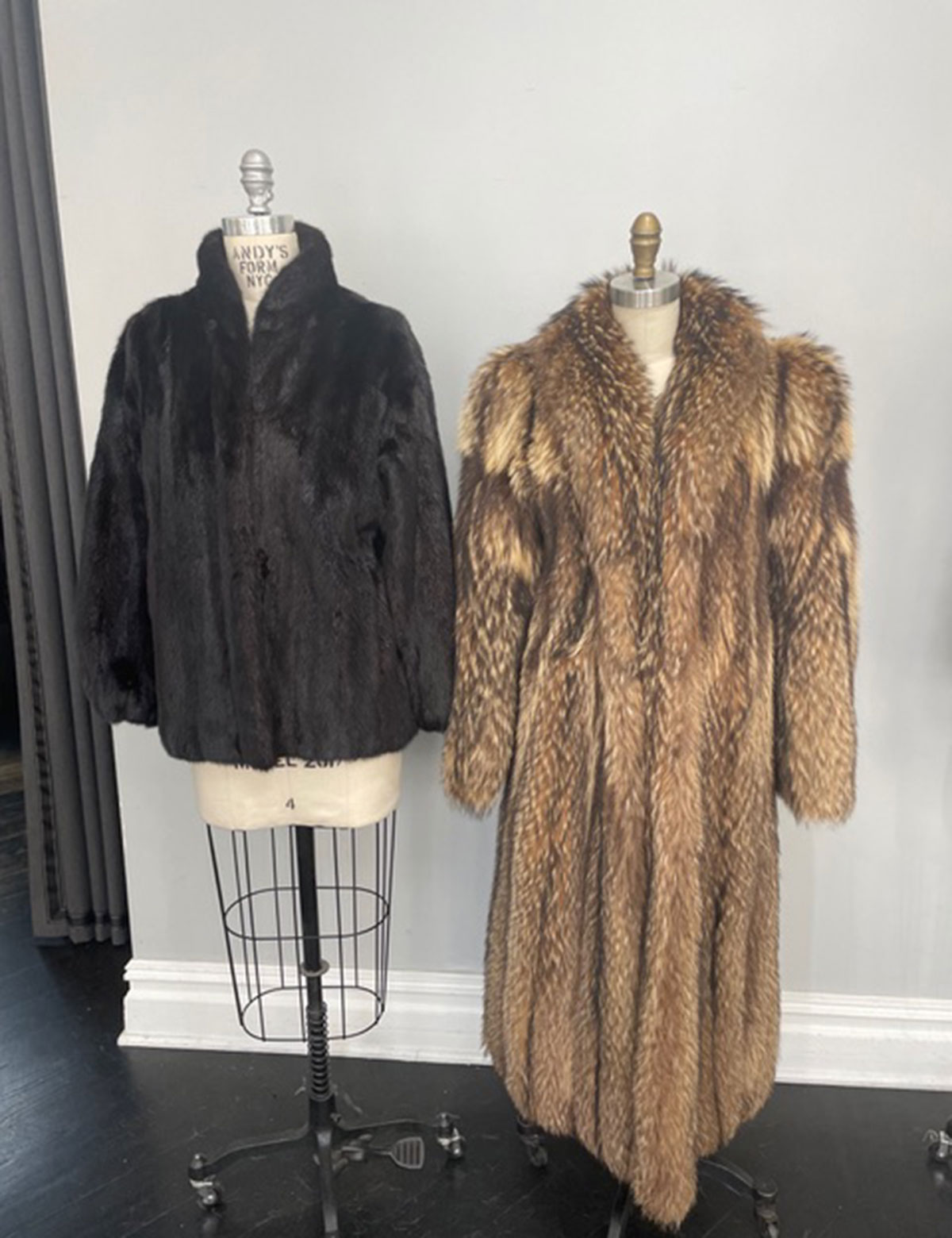
Upcycling fur in NoMad with Pologeorgis
When my mother-in-law moved to Florida in 2023, she left in my possession two fur coats — vintage 1987 — from her closet. Gifts from her husband, the coats were well-loved and well-worn for a decade.
One was a reversible mink raincoat; the other, a tanuki fur, was a statement-making, head-turning pièce de résistance. “Everyone would stop and look, and they always wanted to touch and try on the tanuki coat,” she told me. Tanuki (a Japanese raccoon) was a popular fur in the 1980s and used in coats, hats, and other accessories. It was known for its warmth, and plush, dense, durable fur.
But as fashion trends shifted and anti-fur campaigns picked up momentum in the 90s, my mother-in-law’s furs hung largely untouched in her closet. The styles became dated, but the coats still carried a great deal of sentimental value.
In an effort to keep my mother-in-law’s furs out of the landfill and create something special for her, I sought the advice of NoMad business owner Nick Pologeorgis, whose eponymous company is one of the largest manufacturers of luxury outerwear, furs, and shearlings in the U.S. With a factory in the heart of NoMad, Pologeorgis has been in business 60 years and the company has become well- known for its high-quality and fashionable designs.
Over the years, Pologeorgis has worked with a who’s who of designers, starting with Pierre Balmain in the 1970s. Today in addition to its outerwear and fur business, the company also stores, cleans, and refurbishes vintage and contemporary pieces.
I brought the coats to the Pologeorgis showroom to meet Nick and director of public relations Jenny Roberts who explained to me the process of reworking the furs. “During the initial consultation, we examine the condition of the fur to make sure that it is viable for reworking into a garment or blanket. The pelts should be soft and supple. If fur is not stored properly, it can get dry and disintegrate, which is why we suggest cold storage,” said Nick. “We have successfully remade furs that are over 50 years old, as well as reworking or adjusting furs that are just a few seasons old but need a style revamp.”
Despite heavy wear and not being properly stored, my mother-in-law’s nearly 40-year-old coats were in good condition. We discussed ways to up-cycle and reinvent them into styles that would be usable today. There were a number of options, but we finally settled on making the tanuki into a throw and the mink into a pillow and a small handbag.
Nick explained the steps, “First, we take the garment completely apart, we remove the old lining (we can keep the original monogram and put it back in the garment). We remove the old finishing and padding. We then lay the garment flat like material and select the very best parts to rework. If the fur is very old not everything can be used but we try to use as much as possible.”
We learned that the actual work can take between 10 to 30 hours depending on the complexity of the job. Pologeorgis has a team of craftsman who help with each step of the redesign, including a designer, a sewer who stitches the fur and a seamstress who hand-sews the linings. The process from initial consultation to delivery of the new garment or redesign takes 6 to 8 weeks.
For many, the process is sentimental. “It’s a beautiful thought that you can make your grandmother’s, mother’s, or aunt’s garment into a new and cherished fur. She wore it and loved it 50 years ago and you can now wear it again,” Nick added. “It is not hanging in a closet unworn and unloved, it can be useful again and that means something. It is not just discarded or thrown away and the new owner can make new memories. That is something that you can’t put a price on.”
Restyling starts at $2000 and can go up to $3500 for more complicated designs.
